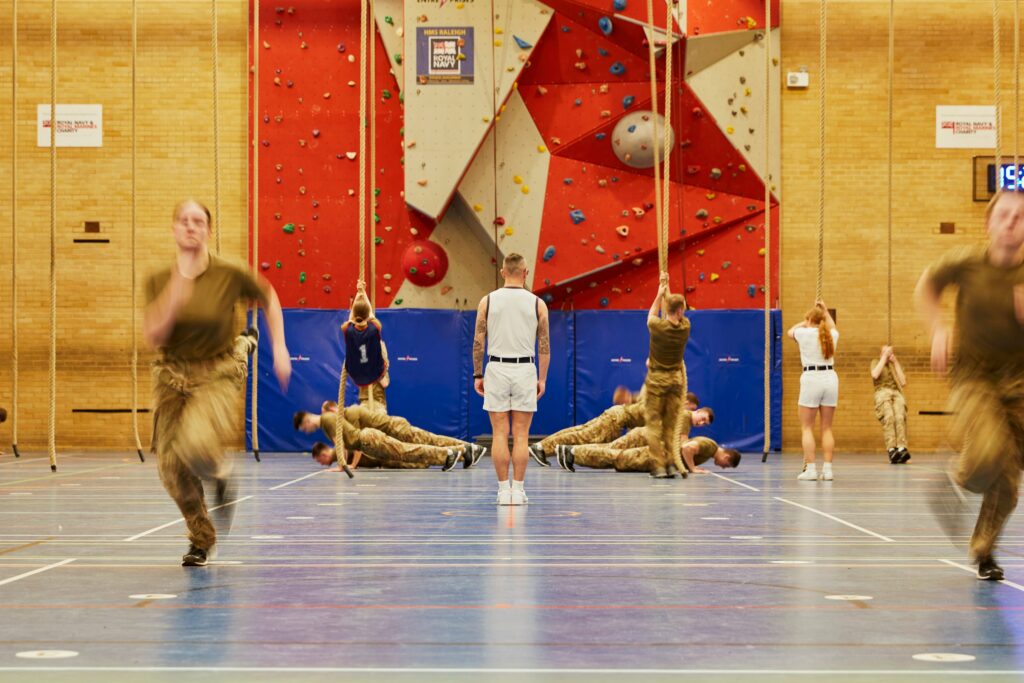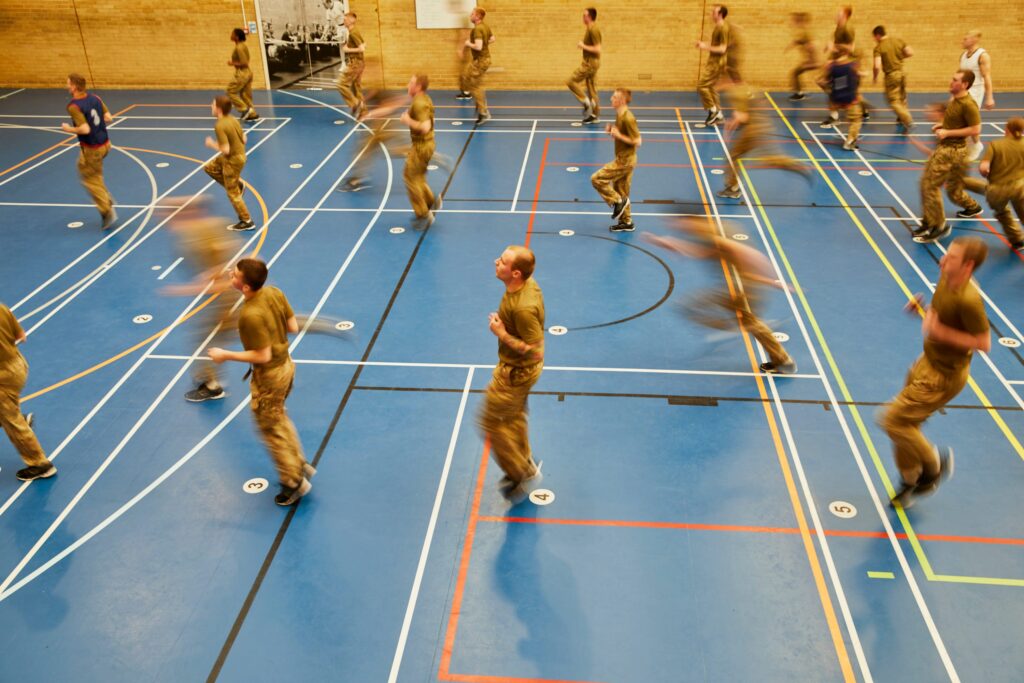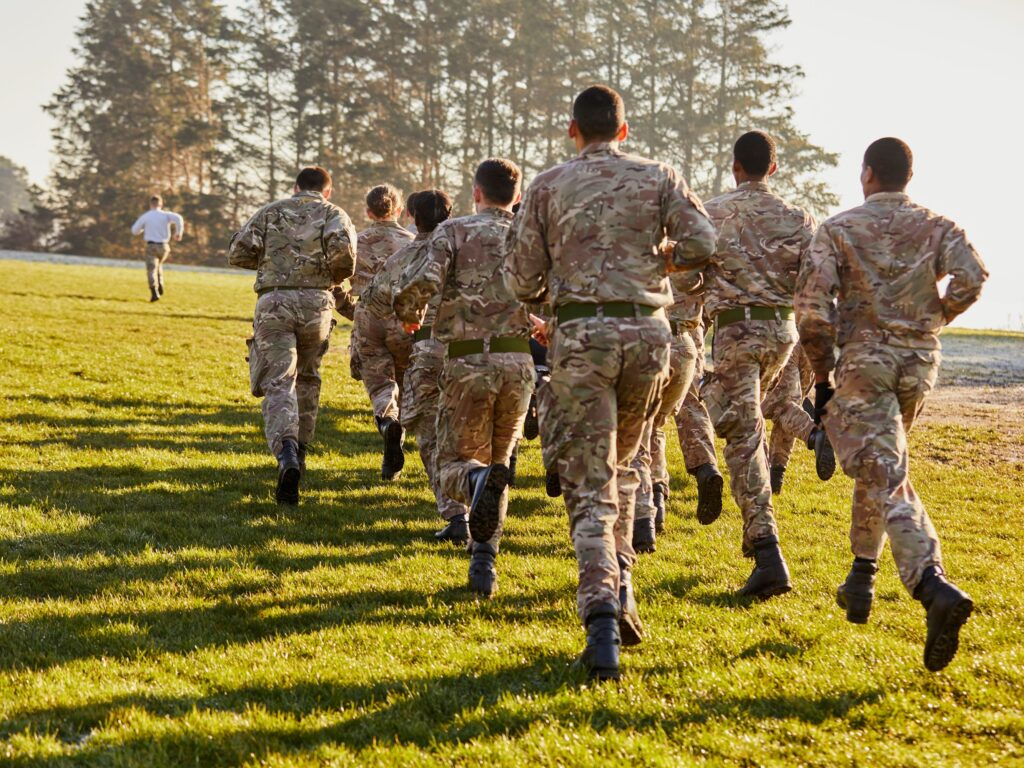- The Royal Navy's annual fitness test is designed to ensure sailors are fit for all eventualities.
- They have to run 2.4 kilometers in a specific time period, depending on age and gender.
- A 20-year-old man, for example, would have to complete the run in 12 minutes and 16 seconds.
Becoming a sailor in the Royal Navy is no mean feat, whether as an officer or a rating. Physical fitness is one of many requirements, both to get in and then keep your job.
Every year, sailors in the UK's naval force must take a fitness test to prove they are fit to fight, serve, and do their jobs, whether at sea or on the shore.
Despite the fact that sailors no longer have to rig sails, climb, and pull ropes on ships, and technological developments have seen a rise in computer and machine-based jobs within the Navy, sailors are still required to maintain a base level of fitness, warrant officer Paul Todd told Insider during a recent behind-the-scenes visit to HMS Raleigh, the base in England where he is in charge of physical training.

Why? Because they need to be prepared for all eventualities.
The annual fitness test is currently being revised and is likely to change in the near future, Todd said. But for the time being, sailors can choose between running 2.4 kilometers (1.5 miles) in a certain time-frame depending on their age and gender, or doing a beep test, which involves running between two points in time to a beep that gradually speeds up, until you fail. Sailors have to reach a certain level according to their age and gender.
All sailors need to prepare for the worst
After Royal Navy recruits and officer cadets go through what is known as initial military fitness in their basic training, it becomes more specialized depending on their branch — submariners, for example, learn how to exercise in a confined space — and they are also encouraged to find ways of exercising that they enjoy.
However, everyone has to do the annual fitness test.
The physical standard is currently based on the VO2 max required for firefighting duties, Todd said. VO2 max is the maximum amount of oxygen you can use during a workout or strenuous activity and is used as a measure of fitness.
While some people argue it isn't relevant to make sailors run 2.4 kilometers because they'd never do that onboard a ship, it's simply a way to measure a person's VO2 max, regardless of their role, Todd said.
"Whether you are a chef, an engineer, a PT, the captain of the ship, you all need to be able to do that job," Todd said. "It's about putting on breathing apparatus and it's about being able to fight a fire. We're all deployable in the Navy, and even though we're not all at sea, we could be."

Even if a sailor is shore-based for years, the run or beep test is still "really valuable," because it effectively provides a health-based MOT, Todd said.
"Whether you're in the military or not, it's nice to have that knowledge that you're going to be able to run around with your grandkids when the time comes, you're not going be infirm and struggling," Todd said.
In the future, physical requirements will become more specialized depending on a person's role, with updates fitness tests potentially coming into play within 12 months, Todd said.
"The new fitness test will be more task-specific," Todd said. One component, for example, might be simulating lifting a casualty and making sure people have the strength and technique to do so safely.
The Royal Navy's annual fitness test
Here are the current pass times for the 2.4 kilometer run:
| Age | Male | Female |
| 16-24 | 11.09 | 13.10 |
| 25-29 | 11.33 | 13.37 |
| 30-34 | 11.58 | 14.05 |
| 35-39 | 12.23 | 14.33 |
| 40-44 | 12.51 | 15.04 |
| 45-49 | 13.18 | 15.35 |
| 50-54 | 13.47 | 16.06 |
| 55-59 | 14.16 | 16.39 |

